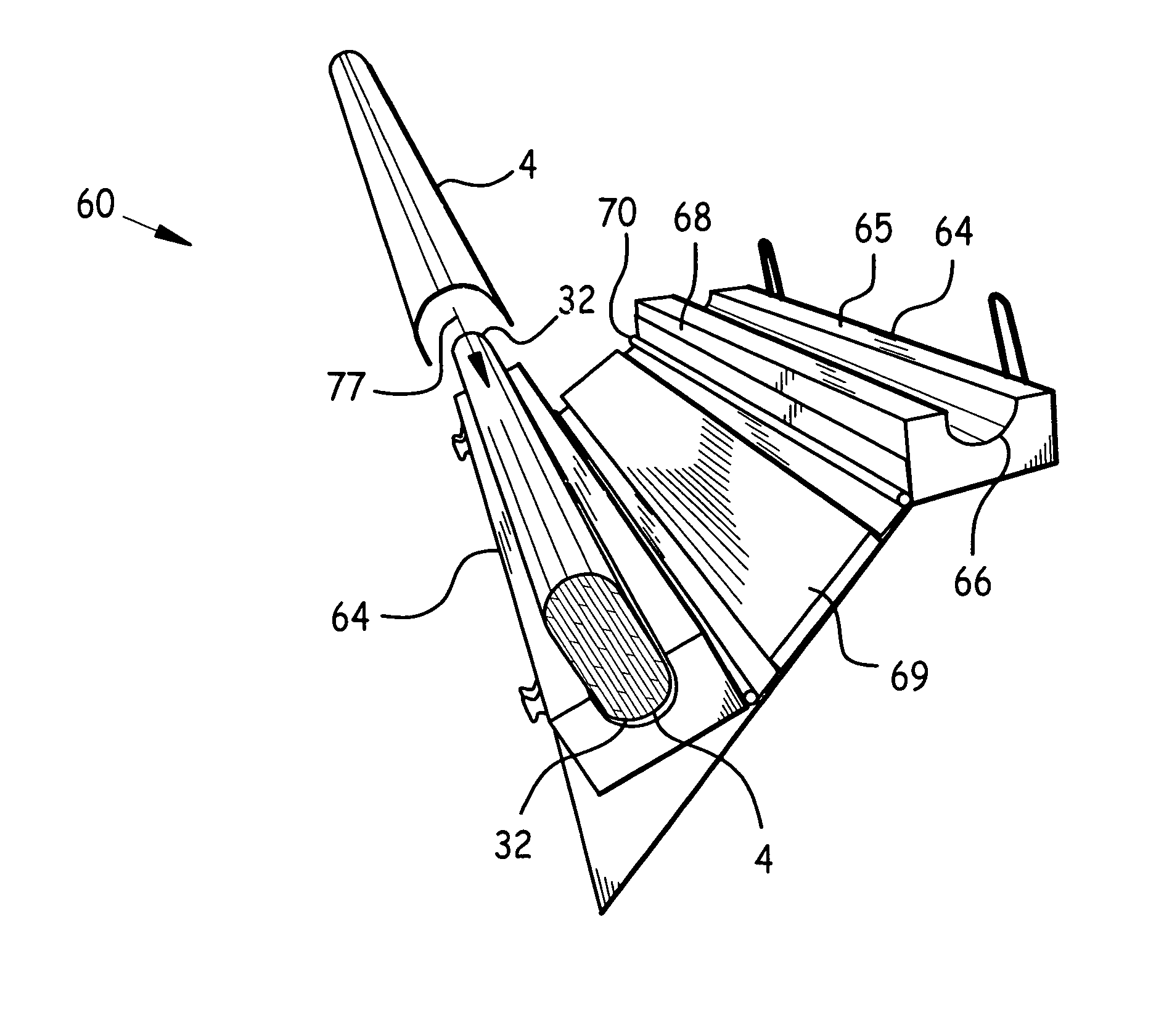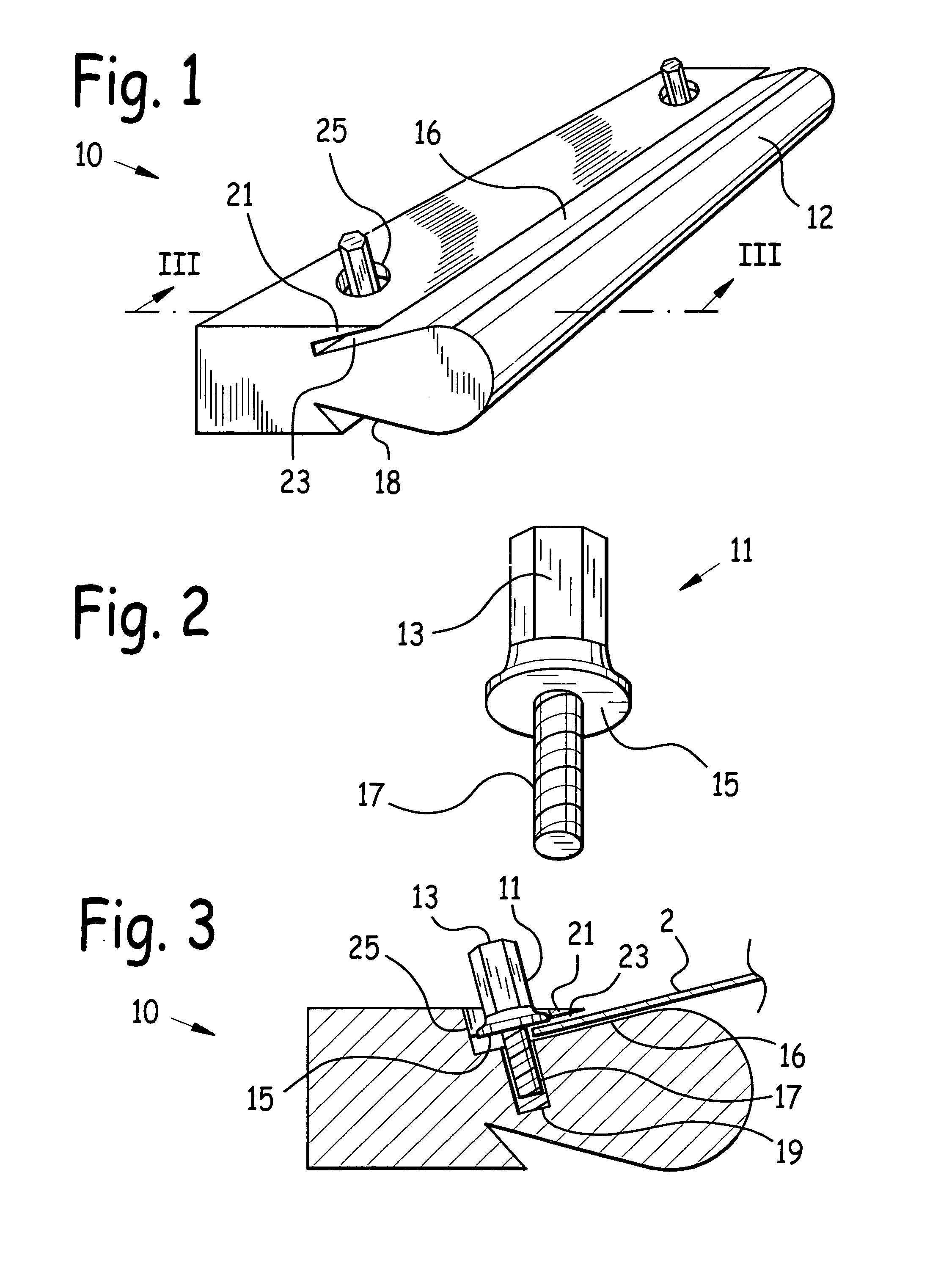Apparatus and method to manufacture shaped counter top edges for custom counter tops
a counter top edge and counter top technology, applied in the field of counter tops, can solve the problems of difficult to achieve neat and aesthetically pleasing corners, bumps and cutouts, and the height and width of produced countertops, and achieve the effects of easy bonding to an existing counter top, neat installation, and increased aesthetics of finished products
- Summary
- Abstract
- Description
- Claims
- Application Information
AI Technical Summary
Benefits of technology
Problems solved by technology
Method used
Image
Examples
Embodiment Construction
[0039]The instant apparatus and method to manufacture shaped counter top edges for custom counter tops comprises three principal steps: first, forming sheet laminate 2 into formed laminate 4; second, adhering formed laminate(s) 4 to substrate 30 to produce substrate / laminate assembly 40; and third, cutting counter top edge 90 from substrate / laminate assembly 40 at the correct cut angles.
[0040]FIGS. 1-6 depict the apparatus and method steps in the formation of substantially planar sheet laminate 2 into formed laminate 4. FIGS. 7-17 depict the apparatus and method steps of adhering formed laminate 4 to substrate 30 to produce substrate / laminate assembly 40. FIGS. 18-20 depict the method steps of cutting counter top edge 90 from substrate / laminate assembly 40. FIGS. 21 and 22 depict alternate embodiments of counter top edge 90. The apparatus and method of these three principal steps will be described below sequentially.
[0041]FIG. 1 is a right side quarter elevated isometric view of pos...
PUM
| Property | Measurement | Unit |
|---|---|---|
| angle | aaaaa | aaaaa |
| face angle | aaaaa | aaaaa |
| face angle | aaaaa | aaaaa |
Abstract
Description
Claims
Application Information
 Login to View More
Login to View More - R&D
- Intellectual Property
- Life Sciences
- Materials
- Tech Scout
- Unparalleled Data Quality
- Higher Quality Content
- 60% Fewer Hallucinations
Browse by: Latest US Patents, China's latest patents, Technical Efficacy Thesaurus, Application Domain, Technology Topic, Popular Technical Reports.
© 2025 PatSnap. All rights reserved.Legal|Privacy policy|Modern Slavery Act Transparency Statement|Sitemap|About US| Contact US: help@patsnap.com



